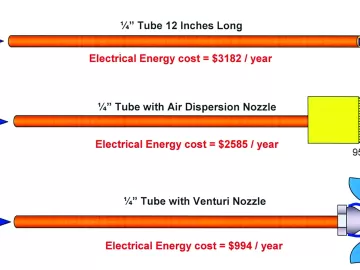Meat Processing Plant Drops Compressed Air Costs 60%
One of the statements made in the Compressed Air Challenge’s Fundamentals of Compressed Air Systems seminar is that improvements can always be made to every compressed air system, including new ones. The statement definitely applies to a Canadian pork processing facility built a few years ago. This article is based on a compressed air audit performed two years into the life of a brand new plant. The audit found numerous problems and made recommendations that helped reduce plant compressed air operating costs by 60 percent.












